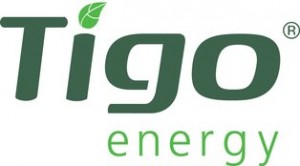I plan to post a follow up to my solar PV post with a few more things you probably didn’t know about solar but that’s not this post. Instead, I want to rant if I may on one particular piece of my solar setup that annoys me.
It should seem pretty obvious that shade is the enemy of a Solar PV installation. That’s fine, you might say, but what if my panels are only partially shaded? Well, in an array of panels a few shaded cells can muck up the power supply far more drastically than it would at first seem. This paper sums up what happens:
In a series connected solar photovoltaic module, performance is adversely affected if all its cells are not equally illuminated. All the cells in a series array are forced to carry the same current even though a few cells under shade produce less photon current. The shaded cells may get reverse biased, acting as loads, draining power from fully illuminated cells. If the system is not appropriately protected, hot-spot problem can arise and in several cases, the system can be irreversibly damaged.
Irreversible damage? To my expensive solar installation? Yikes! What can we do?
Fortunately, bright minds have worked on this problem and come up with a few solutions. One method is to take the output from every panel and turn it into alternating current (AC) right there. The devices that do this are called micro inverters. The drawback to micro inverters is that you’re putting expensive electronics in a punishing environment: on a burning hot roof that reaches 140 degrees Fahrenheit. When one fails, the panel it’s attached to stops producing power until some brave soul climbs a ladder and replaces it. Not good.
The other way to deal with reverse current in solar PVs is to use electronic diodes called (appropriately enough) power optimizers on each panel. These block reverse current at the individual panel level, keeping the bad cells from dragging down the good cells. These optimizers are also contain significantly fewer electronics, making them more reliable.
Our PV system uses power optimizers from Tigo Energy that are branded as “Maximizers.” The Tigo optimizers do what they do well in that our system seems to produce very efficiently. I have no problem with how they work, but what really gets in my craw is a boneheaded business decision by Tigo.
Let me explain. Tigo’s optimizers are wired up to a “management unit” which in turn is connected to the homeowner’s computer network. From there, the Tigo sends the data from your panels to its datacenter which allows the homeowner to pull up a webpage showing the system’s power production. I’m a stats junkie so I love the ability to do this.
The problem is that this webpage service is not free. Tigo charges you for access to your data. True, the price is modest, with $85 covering 10 years of access, but the principle of someone charing me to access the data that I’m creating just rubs me the wrong way. I’m an open source advocate and for me open data is the way to go, especially since the system I paid for is producing that data.
Solar PV owners tend to think of themselves as a bit like pioneers. Solar PV offers a measure of independence from fossil fuels, electrical grids, and (for the truly adventurous) could even provide for the comforts of home far from any utility lines. That would include Internet service, in many cases. What are those hardy, off-the-grid folks living in the middle of the great outdoors going to know about their solar production if they live someplace where the Internet isn’t?
What if Tigo becomes another victim of Chinese competition and goes bankrupt? What happens to your data? Yes, your data? It seems ridiculous to put one’s solar PV data anywhere but directly in the hands of its owner.
I like how well my Tigo stuff works, but this fee business is a boneheaded decision that some fresh-faced MBA dreamed up for its recurring revenue stream. For that reason alone I would suggest that anyone considering a solar PV installation insist on an optimizer company that doesn’t treat its customers like rubes.
